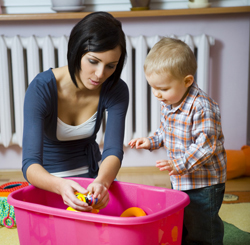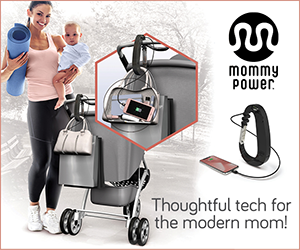You’re never too young to get organized

Professional Organizers in Canada show you how to teach your children responsibility for organizing their things.
Parents often find themselves frustrated and annoyed at the mess in their home because of their child’s disorganization. Perhaps it’s time to encourage your child to join-in with the clean-up routine. Carolyn Caldwell, Toronto, Director on the National board of Professional Organizers in Canada, explains it’s never too early to instill organizational skills in your child and it can begin at a very young age. Below are some tips from Caldwell on how to make this easier for your kids.
Keep the clothes off the floor
Start with the basics and encourage your children to keep their clothes off the floor! “If a child can put their clothes on themselves, they can learn to pick them up or better, not to leave them there,” says Caldwell, “They don’t have to be perfectly folded. Children can put clothes in a laundry hamper or on a hook.”
• For younger children, ensure you have a laundry hamper that’s safe and age appropriate. Remove the lid and help each child understand this is where the dirty clothes go. You can also create a handy hook for them to hang up clothes up they’ll wear again.
• For older children, wire baskets work well in addition to hooks. Teach them that clean clothes go back in the clean clothes compartment and soiled clothes go into the dirty clothes compartment.
Put Away Your Toys
Train your children that putting away their toys is all part of play time. Caldwell offers ideas on how to help children keep their toys in order and out of the way!
• Although deep toy containers and trunks are a great idea for keeping all the toys together, it’s not practical for kids. They’ll find shallow containers easier to locate their toys quickly without pulling all the top layers onto the floor first!
• With small children, remove the lids from the containers. If you can, draw a picture or take a photograph of the contents and stick it to the outside of the container so your child will know what’s inside and where to put the toys away.
• After play time comes tidy time! For each period of play reserve time to tidy up afterwards. This teaches children that one always follows the other – a lesson that can be translated later into the work environment or while doing homework
Keep the bedroom clean and tidy
The bedroom is where your child begins and ends each day, so it’s important to keep it clean and tidy. This doesn’t mean the responsibility is fully on you! Caldwell suggests a few ways to help your children keep their room organized each day.
• Ask them to make the bed! “Many kids think that making the bed each day, only to sleep in it at night, is a waste of time,” says Caldwell. “But it’s an important step in keeping the bedroom organized.” A bed that’s made creates a large visual impact of calm on the room and emphasizes other areas of the room that might not be as well organized. They’ll see everything should be in its place, even the bed sheets!
• Just as we teach our children to spend time brushing their teeth and combing their hair, we should reserve time for tidying the bedroom. Even a short ten minutes, becomes routine after a while. Caldwell recommends choosing the end of the day so children wake up to an organized environment rather than a chaotic room. Find the best tidy-up time for your family’s schedule, and stick to it.
• Set a timer. Help children understand that routine tidy-up is not meant to be a big, clean-up job. Try 10 or 15 minutes depending upon the children’s age. Stop when the timer goes off and celebrate or reward your child for their efforts. Rewards might include time reading with you, curled up on the couch, or playing 15 minutes of their favourite game. Remember to reward yourself. Children will associate the organizing with positive reinforcement, which will stand them in good stead as they become adults
Teach them to let go
Throughout our lives, we learn that not everything lasts forever. Whether it’s a pet, a toy, or a friend, sometimes things go away. You can teach your child the concept of letting go at an early age so they are familiar with the lesson as they grow.
• Every six months to a year, go through the toys with your child and point out the ones they don’t play with any longer. Suggest they donate them to another child or take them to a yard sale. Make sure your child is part the process and makes the decision to let go by themselves with your support.
• The same thing can be done with clothes. If your child is young and you are clearing out clothes, include them in the process once you’ve made the selection. Show them a pile of clothes that don’t fit any more, confirm they are ready to let go of the clothes, and ask them to come with you to Goodwill to donate them. By including your children, they’ll learn when it’s time to let go of certain things and be able to make those decisions. This decision making skill is an important step in organization.
Many people struggle to instil organizational behaviours in their children, but don’t worry, it’s never too late and there is help available.
To find a Professional Organizer in your area, visit the POC website at www.organizersincanada.com Professional Organizers in Canada (POC) is a national registered non-profit association that provides education, business development tools and a code of ethics for all types of organizers across Canada.



